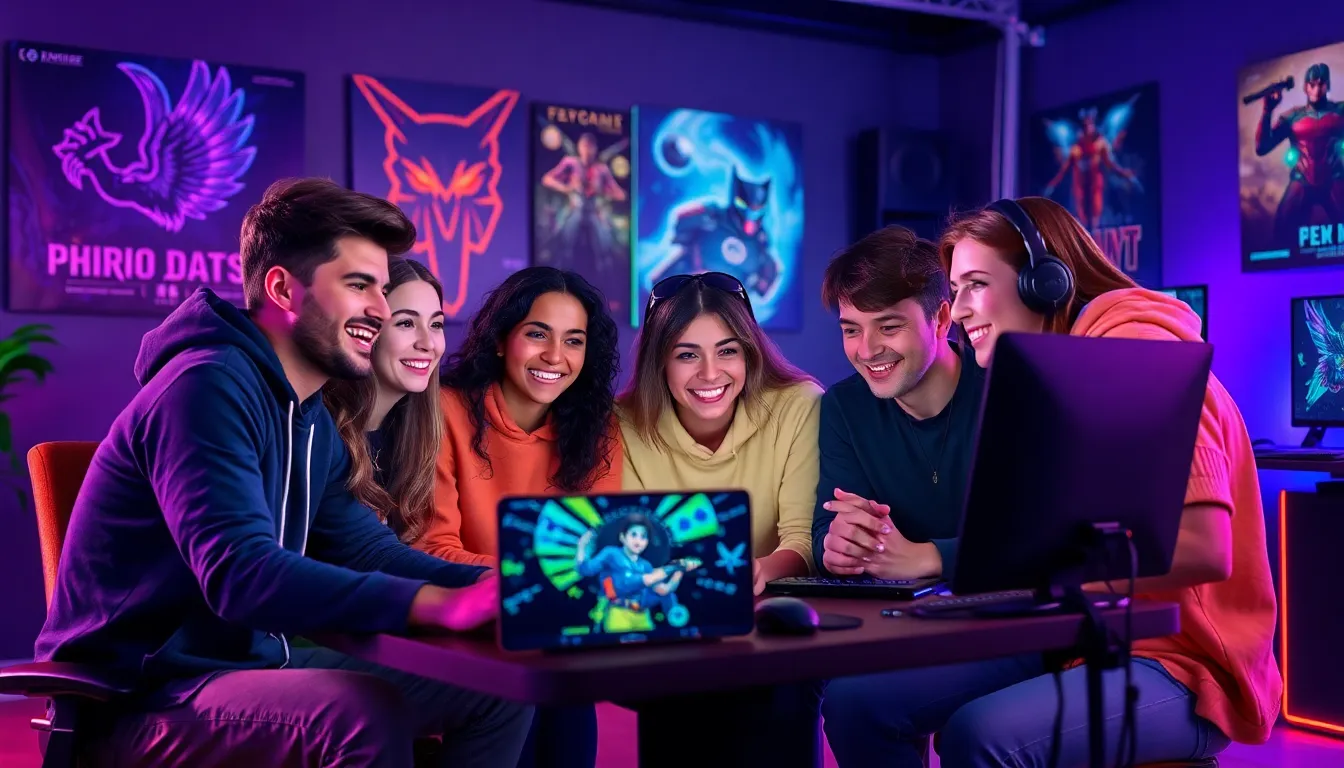In a world where gamers unite across consoles and devices, cross-platform gaming is the superhero we didn’t know we needed. Imagine battling it out with friends on different platforms, all while sipping your favorite beverage and not worrying about which system they own. It’s like a digital party where everyone’s invited, and the only thing missing is the awkward small talk.
Cross Platform Game
Cross-platform games allow gamers on different hardware to connect and compete. Players using consoles like PlayStation or Xbox can join forces with those on PC or mobile devices. This bridge among platforms fosters a diverse gaming community.
Developers create cross-platform games to reach broader audiences. By eliminating barriers associated with specific hardware, these games attract more players. Popular titles include Fortnite, Minecraft, and Rocket League, showcasing the benefits of this approach.
The technology behind cross-platform functionality often involves cloud services and dedicated servers. These innovations help maintain smooth interactions among players. Game studios prioritize consistent performance and user experience across all devices.
In addition, cross-platform play enhances social bonds. Friends separated by device preferences can collaborate and strategize together. Players report increased satisfaction when engaging with others regardless of their chosen platform.
Industry analysts predict steady growth for cross-platform gaming. As gaming evolves, more developers likely embrace this model. Trends indicate that cross-platform capabilities could become standard in future titles, further unifying the gaming landscape.
Statistical data supports the rising popularity of cross-platform play. Surveys reveal that over 70% of gamers express interest in playing with friends across different consoles. This demand drives the gaming market to prioritize inclusive experiences.
Cross-platform games embody the future of gaming. They break down walls, allowing players to interact fluidly. The impressive rise in these games reflects a change in how individuals engage with entertainment.
Benefits of Cross Platform Gaming

Cross-platform gaming offers numerous advantages that significantly enhance the gaming experience. These benefits appeal to players and developers alike, creating an inclusive gaming landscape.
Increased Player Base
A broader player base reaches players across various platforms. Cross-platform games eliminate restrictions, ensuring no one misses out due to hardware choices. Developers attract more users, driving community involvement. Statistics indicate that over 70% of gamers prefer playing with friends on different consoles. This trend allows titles like Fortnite, Minecraft, and Rocket League to thrive. By connecting players from diverse backgrounds, games cultivate a richer environment for interaction and competition.
Enhanced Social Interaction
Social bonds strengthen through cross-platform gaming. Friends can collaborate and strategize regardless of their chosen devices. Players share experiences and memories, uniting around common interests. Communication becomes seamless with integrated chat features and shared objectives. Gaming sessions transform into engaging social events, allowing meaningful interactions. This inclusivity encourages players to invite friends from various platforms, reinforcing connectivity. Continuous engagement enhances satisfaction, solidifying relationships built through gameplay.
Popular Cross Platform Games
Numerous games unite players across platforms, showcasing the versatility of cross-platform gaming. Here are two standout titles that exemplify this trend.
Game 1: Fortnite
Fortnite remains one of the most popular cross-platform games. Released in 2017, it supports PlayStation, Xbox, Nintendo Switch, PC, and mobile devices. Players engage in battle royale modes, building structures while competing against others. Frequent updates introduce new content, ensuring a fresh gaming experience. Seasonal events enhance player engagement, and its social features allow for team play and communication.
Game 2: Minecraft
Minecraft has captivated millions since its launch in 2011. This sandbox game is available on platforms such as PlayStation, Xbox, PC, and mobile devices. Creative and survival modes provide variety, allowing players to build or explore. Community-driven updates regularly add new features and content. Its cross-platform functionality promotes collaboration as players interact within the same worlds, fostering creativity among friends.
Challenges of Cross Platform Gaming
Cross-platform gaming faces several challenges that developers must navigate to create a seamless experience for players. Among these challenges are technical limitations and balancing issues.
Technical Limitations
Technical limitations pose significant hurdles for cross-platform gaming. Differences in hardware capabilities affect performance. For instance, gaming consoles typically possess specific processing power, while PCs offer more extensive customization options. Such disparities can lead to inconsistent gameplay experiences across platforms. Additionally, varying internet speeds impact connectivity, leading to lag or latency in multiplayer scenarios. Developers often rely on cloud services and dedicated servers to mitigate these challenges. Implementing optimized solutions enables smoother interactions and helps create a unified gaming experience.
Balancing Issues
Balancing issues frequently arise in cross-platform environments. Different input methods can create advantages or disadvantages for players. For example, keyboard and mouse setups often provide quicker aiming and more precise control compared to game controllers. This disparity can skew competition, making it essential for developers to implement balance adjustments. Frequent updates and patches address these differences, allowing developers to fine-tune gameplay mechanics. Ensuring fair competition requires constant monitoring of player performance across platforms. Addressing these challenges contributes significantly to player satisfaction and retention in the cross-platform gaming community.
Conclusion
Cross-platform gaming is reshaping the landscape of the gaming industry. By breaking down barriers between different consoles and devices, it fosters a vibrant community where players can connect and collaborate. This inclusive environment not only enhances social interactions but also drives player satisfaction.
With the continued growth of cross-platform capabilities, developers are likely to prioritize this model, ensuring that gamers can enjoy seamless experiences across various platforms. As technology advances and challenges are addressed, the future of gaming looks brighter than ever. Embracing cross-platform play is essential for both players and developers, paving the way for a more united gaming experience.




